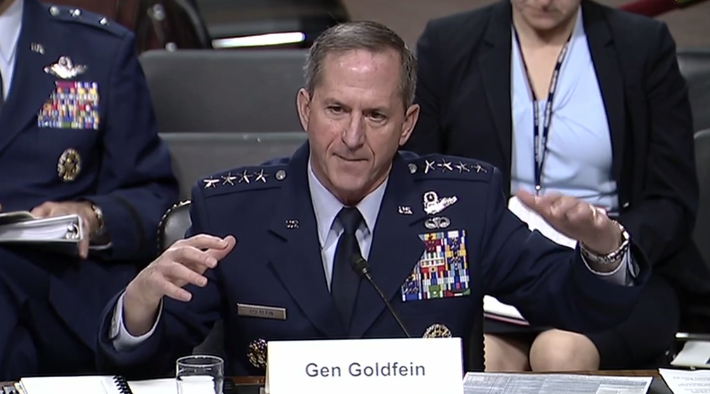
Air Force Chief of Staff Gen. David Goldfein speaks Tuesday at a Senate Armed Services Committee hearing. Screenshot photo.
The Air Force has kept a steady focus on the Pacific even as it has been forced to reduce its force structure in other areas because of the importance of the region, USAF officials told lawmakers on Tuesday.
Amid concerns over North Korea’s nuclear ambitions and the rapid modernization in China, USAF Chief of Staff Gen. David Goldfein told the Senate Armed Services Committee on Tuesday that USAF posture has been “fairly stable” even though “drastic reductions over time” have forced the service “to pull forces … primarily from … the US and Europe.” This is important to show allies that the US is committed to the Indo-Asian-Pacific.
With the renewed budget stability, Goldfein said the Air Force wants to “further reinforce that air component solidarity with our allies and partners,” in “how we exercise and how we operate” on the Korean Peninsula and beyond, he said.
“Our responsibility is to be strategically predictable to our allies and to be there and to be operationally unpredictable to our adversaries,” Air Force Secretary Heather Wilson said during the same hearing.
Wilson said her biggest concern in the region is China’s quick pace of development, specifically in hypersonics. China has a “pace of innovation” that has prompted “rapid growth,” she said.
While USAF has drown down significantly in Europe in recent years, the Pentagon’s increased budget request for the European Deterrence Initiative — $6.5 billion for Fiscal 2019 — aims to invest in access and basing, letting the Air Force “take a smaller force and push it forward very quickly,” Goldfein said.